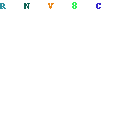Are you hammered, sloshed or just a little tipsy
The terms come from a list of 26 compiled by academics that, it turns out, include some many of the bartenders and servers say they would never use, including loopy, blind, lit and shot. It contains one that reminds The Madison's Tyler Martin of steroid use – juiced – and lacks one that he really enjoys: Ruined.
Here they are, from least to most inebriated:
Sema Sencan, 22, bartender at The James Joyce Irish Pub:
1. Light-headed
2. Buzzed
3. Tipsy
4. Loaded
5. Gone, Wasted, Bombed, Plowed, Ripped
6. Tanked, Sloshed, Inebriated
7. Plastered, Smashed, Hammered
8. Obliterated
9. S--- faced
10. F---ed up
Trevor Bray, 27, bartender at The Pump:
1. Tipsy
2. Inebriated
3. Drunk
4. Tanked
5. Loaded
6. Ripped
7. Trashed
8. Wasted
9. Hammered
10. Obliterated
Tyler Martin, 29, server at The Madison:
1. Trashed
2. Gone
3. Wasted
4. Tanked
5. Plastered
6. Plowed
7. Blind
8. Sloshed
9. S--- faced
10. Obliterated
Research: Iain Marlow
Alcohol researchers should know what it means to be "hammered."
And while they're at it, they should understand being "sloshed," "tipsy" and "wasted" as well.
The point is not to be their own guinea pigs, or to keep up with the spirit of the holiday season.
Rather, a study says scientists looking at alcohol abuse should embrace such colloquial terms for intoxication and insert them into their stuffy research lexicon.
While "drunk" is the standard term used in many questionnaires that assess imbibing levels and patterns among university students and other groups, it fails to capture gradations of inebriation, the paper says.
"Anyone who has consumed alcohol, or even anybody who has not, knows that there is this wide language that is used to describe the intoxicating effects of alcohol," says Ash Levitt, a graduate student in psychology at the University of Missouri.
"And unfortunately ... other alcohol researchers have not really utilized this language, which can be (academically) beneficial," says Levitt, a corresponding author on the paper. The research will appear in the March issue of the journal Alcoholism: Clinical and Experimental Research.
"By using the language we can ... shed better light on the subjective experiences that individuals have when drinking alcohol," Levitt says.
"Often times the subjective experience of drinking and the objective experience of drinking are totally two different things."
Research into drinking patterns and levels often relies solely on self-reporting surveys that limit their questions to the number of drinks consumed over given time periods.
Robert Mann, a senior public health scientist at Toronto's Centre for Addiction and Mental health, says the study is "intriguing" and could provide broader dimensions for alcohol abuse research.
"It certainly shows the range of ways in which people think about ... being intoxicated or how intoxicated they are," Mann says.
The words could help researchers and clinicians understand the levels of their subjects' or patients' inebriation, he says.
But the centre does not use such words in its surveys, limiting them to specific descriptions of amounts consumed or behavioural and cognitive effects of drinking.
"We wouldn't use the kinds of words or adjectives that are used in this paper," he says.
"We would say, 'How often have you consumed alcohol? How many drinks did you have on an (a particular) occasion? How many times have you had five or more drinks on an occasion?' "
But the answers don't tell researchers all they need to know, Levitt says.
"When you ask people how many standard drinks they had and how long it was ... you are going to get objective information," Levitt says.
"What you're not going to get are all these individual differences in how people respond to alcohol,'' he adds.
For example, a 300-pound man will have a different experience with a set amount of alcohol than a petite woman, Levitt says.
"And even adults that weigh the same could still process it differently, based on metabolism, based on the contents in their stomach, based on what they are drinking," he says.
To tease out these personal differences, the study suggests researchers utilize the alcohol slang, which holds as many descriptive words for drunk, it seems, as the Inuit have for snow.
"We can really get a better understanding about the intoxicating effects of alcohol that we might not get from objective measures, and also that we might not get just from using the word 'drunk,' " Levitt says.
"People don't always define 'drunk' in the same way and that's certainly been shown a lot in the literature."
Levitt and his colleagues polled 336 college students, split about equally between the sexes.
Each was asked about their knowledge of common intoxication slang – which included 26 separate words – and how they used them.
Researchers found the word "drunk" was typically used by subjects to describe middling levels of inebriation only.
The slang words, on the other hand, fell on either the moderate or extreme ends of the descriptive intoxication scale.
Men tended to use stronger, heavy-intoxication words such as "hammered," "smashed" and "wasted," while women were more likely to use euphemistic moderate-intoxication terms, like "tipsy."
Women, however, described themselves as "tipsy" after imbibing four drinks over a two-hour period, which is defined as binge drinking for women.
Because they tend to use the less severe description, however, women may perceive their levels of intoxication as being less severe, creating the danger they may drink and drive or participate in other dangerous behaviour, Levitt says.
Most importantly, use of slang would allow researchers to more sensitively assess the level of intoxication research subjects were feeling, Levitt says.
























